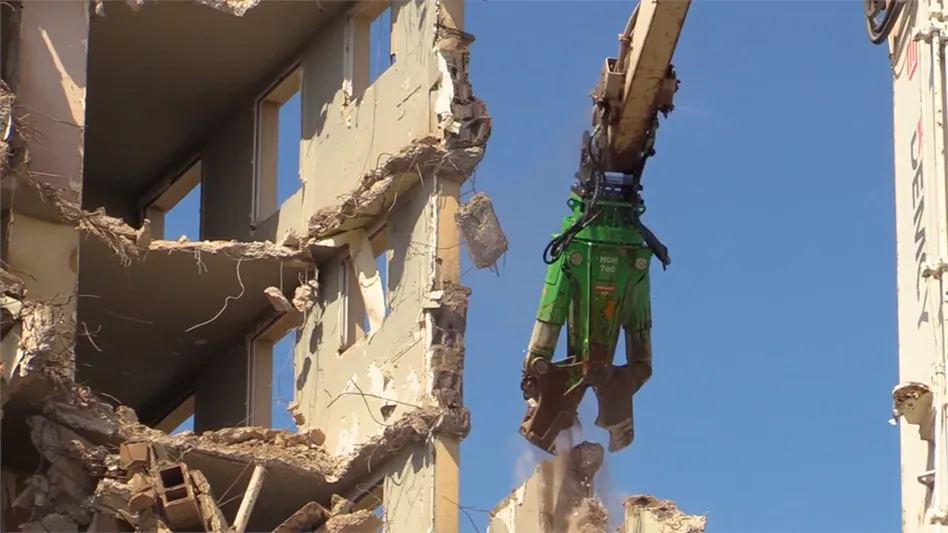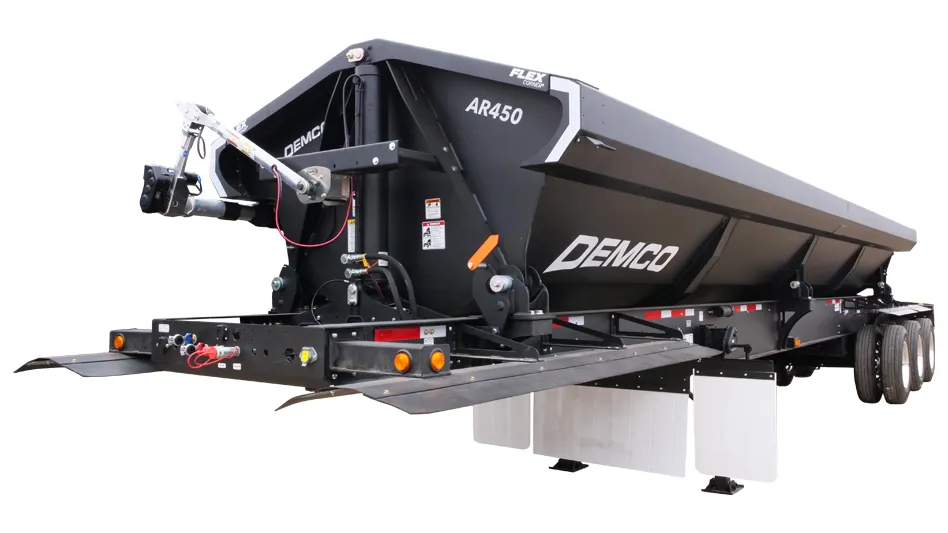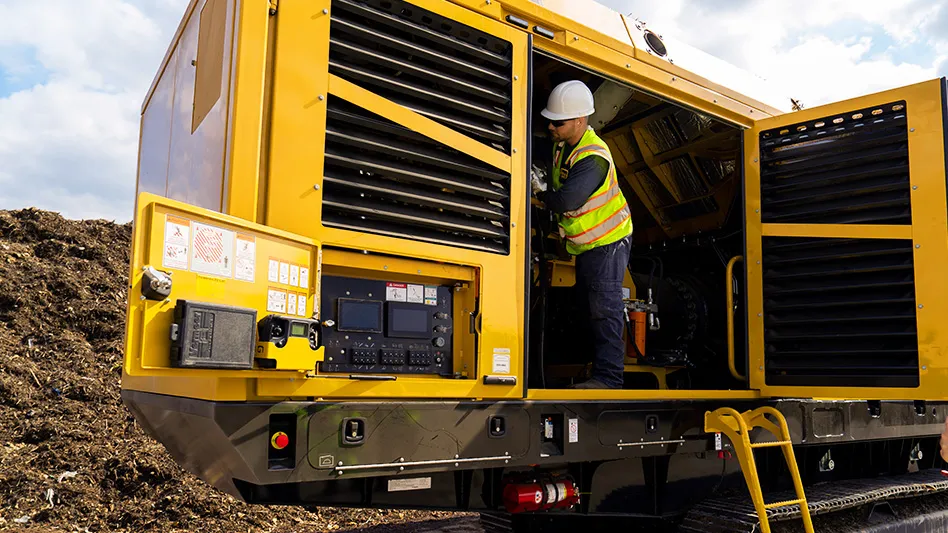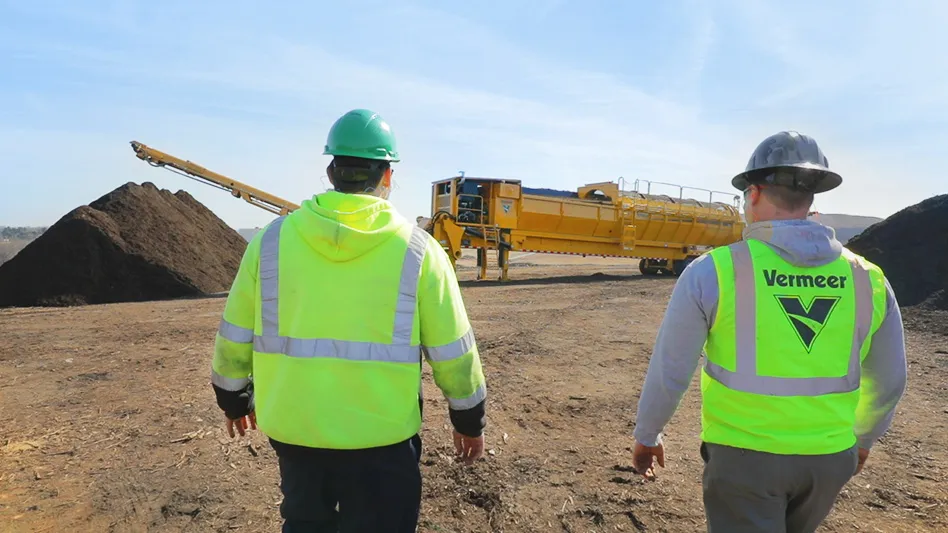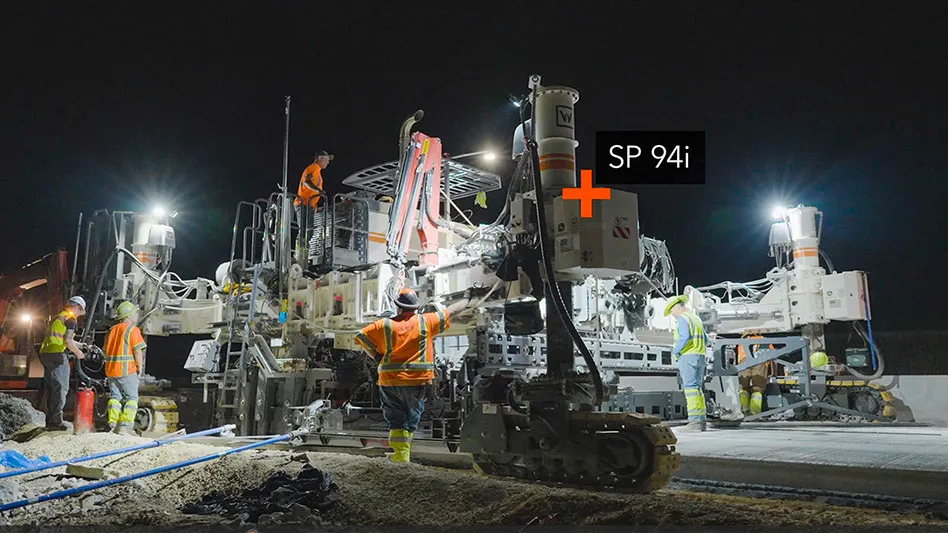
When Environmental Holdings Group (EHG) was chosen as a demolition contractor for several projects at the University of North Carolina Charlotte Campus in 2018, one project in particular posed a unique challenge: a smokestack that was located in the middle of campus and attached to an operating steam plant, requiring layer upon layer of brick to be mechanically removed from as high as 120 feet in the air.
Fortunately, the employees of the Morrisville, North Carolina-based contractor didn’t need to work at such heights. They stood comfortably on a manlift from a safe distance, controlling and watching a demolition robot hoisted on a platform dangling from a crane plug away at the job.
In the face of stricter regulations and ongoing labor shortages, compact remote-controlled demolition machines—more often called demolition robots—are growing increasingly popular among contractors for their ability to take on jobs that are risky, time-restrictive or labor-intensive.
Seeing the potential in these machines, EHG was an early adopter of demolition robots.
“I was probably one of the first or second people in the industry who had a robot in North Carolina. I’ve always been kind of partial to them. They’re efficient machines,” says Joe Souders, the cutting and breaking division manager of EHG.

Safety and more
Demolition robots have been around for decades, but they’re beginning to gain more traction among contractors who are seeking solutions to their aging workforces. Compared to laborers working with hand tools, robots can often help complete the job in a timelier, safer and more efficient manner.
The robots resemble mini excavators, consisting of a main body and a disproportionately sized arm that are both mounted on rubber tracks and four feet to stabilize the machine. Their unique design helps the robot crawl, climb stairs or even ride an elevator. Plus, their smaller footprint allows this equipment to fit through doors and other compact spaces to work in areas where larger equipment doesn’t fit.
These robots can be outfitted with different attachments, including grapples, shears, buckets, breakers and crushers that make them versatile for various jobs. Plus, most run on an electric charge, allowing operators to use them indoors and in spaces where diesel isn’t permitted.
Because of their multifunctional use and compact design, the machines can work in constricted environments that would otherwise be too dangerous or even inaccessible for humans. Dark, small, airless spaces that pose dangers to laborers are easily reached by the robots.
Demo robots also give operators the added benefit of increased power. They are stronger than humans and, in turn, can work faster.
In addition to protecting workers from worksite hazards, demolition robots can also guard employees from the normal wear-and-tear that comes with operating hand tools.
“It’s becoming more and more evident that the stress on the operator’s body from vibration [of hand tools] is a concern. The amount of work that can be done with robots is also noteworthy,” says Shawn McNeil, the light demolition manager of Swedish manufacturer Husqvarna. “Robots might compare to six or seven people on tools.”
In a recent webinar, Brokk Inc. Vice President of Sales Peter Bigwood says that robots can eliminate some of the most common worksite injuries, which are often caused by repetitive motions, awkward postures and high levels of vibration.
“Using data from several of our customers, we’ve seen over a 50 percent reduction in workers’ comp costs and over a 75 percent reduction in back injury claims for the applications where robots have been used,” Bigwood says.
_(002)_fmt.png)
Help with hiring
While the robots are useful for preserving one’s existing workforce, they also address another focal issue in the industry—hiring challenges.
A recent survey conducted by the U.S. Chamber of Commerce and Chicago-based U.S. Gypsum Corp. found the biggest myths centered around working in building-related industries are that the jobs are “dirty,” only consist of manual labor positions and have no defined career path.
A few years ago, Souders set out to dispel those myths by using robots as a way to attract younger workers to the industry.
“I use mine because it’s a great way to bring young people into the industry,” Souders says. “The millennial generation and those who play video games can learn to run one of these machines in about an hour.”
Though the robots can take the place of laborers on some jobs, they still require human operators. Souders prefers relying on trained employees dedicated to the role.
“You need a trained operator for these machines,” Souders says. “They do very well when you have one person operating them.”
Even with initial training, Souders says the robots can pose a slight learning curve for experienced equipment operators. Since most operators are used to sitting in the seat of the equipment instead of controlling from a distance, getting used to the controls can take time. Controlling these robots can become even more complex when an operator is facing the front of the robot, as maneuvering directions are flipped.
“It’s all hand-eye coordination,” Souders says. “You’re watching what you’re doing, but you don’t have feedback from the machine in the same way.”
The robots don’t come cheap—most units start at well over $100,000 without any additional features. But for those who make the investment, it doesn’t take long to start seeing returns.
_fmt.png)
Jobs large and small
Souders says he only used one robot for EHG’s smokestack demolition—a Husqvarna DXR 300 that was attached to a crane-mounted, custom-engineered platform. By starting at the top of the structure and working down, he says the robot was able to complete the job in a little less than two days without any incidents, eliminating a significant liability for both EHG and the general contractor.
But a one-robot smokestack demolition job is just the beginning of what the technology is capable of.
Souders says he often deploys his fleet of four robots to jobs with weight and size restrictions, when diesel isn’t permitted on-site or when he’s looking to reduce labor costs of a job.
“I would say we utilize our machines about 70 percent of the time,” Souders says.
He notes that the benefits of the robots were especially handy when EHG was awarded the full structural demolition work for the Colony Square Mall in Atlanta. Souders deployed his entire fleet to tackle the project because of the robots’ compact size-to-power ratio and safety features. In the first phase of a project, one of the robots removed a roof structure that required “surgical demolition,” as the others were deployed to pick away at the rest of the three-tiered structure during the second phase.
There are several big-name demolition robot manufacturers that offer a variety of features on their machines. Whether contractors opt to rent these machines or purchase them outright, Souders says having them on hand for a challenging job is well worth the price.
“They’re a great asset to have,” Souders says.
This article originally ran in the May/June issue of Construction & Demolition Recycling magazine. The author is the assistant editor for Construction & Demolition Recycling magazine and can be contacted at tcottom@gie.net.
Latest from Construction & Demolition Recycling
- EPA announces $3B to replace lead service lines
- NWRA honors award recipients during annual breakfast at WasteExpo
- Safe Fleet, ITA Dynamics unveil integrated financial, route management system
- Bateman unveils 210 series orange peel grapple
- Republic reports first quarter growth
- Meridian Waste completes second acquisition of 2024
- NEPA revisions could delay critical infrastructure, ABC says
- Liebherr USA announces new divisional director
